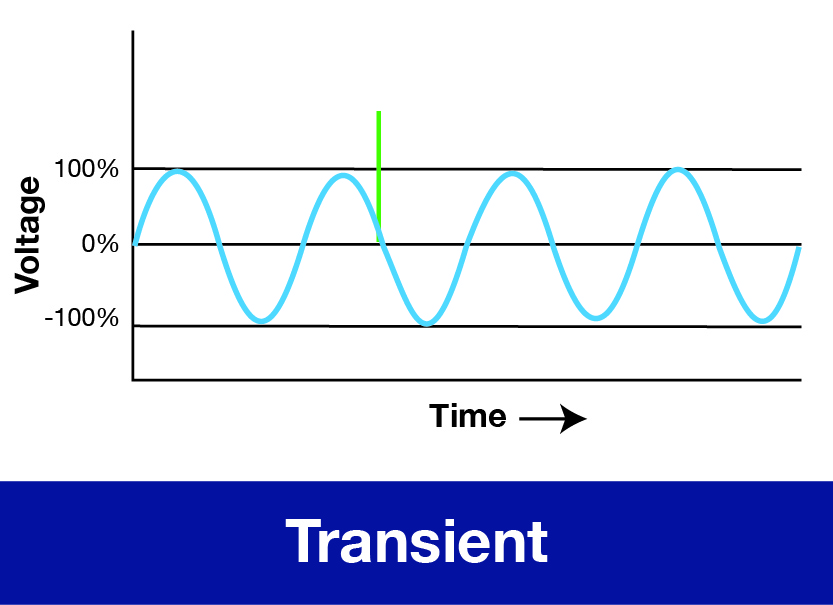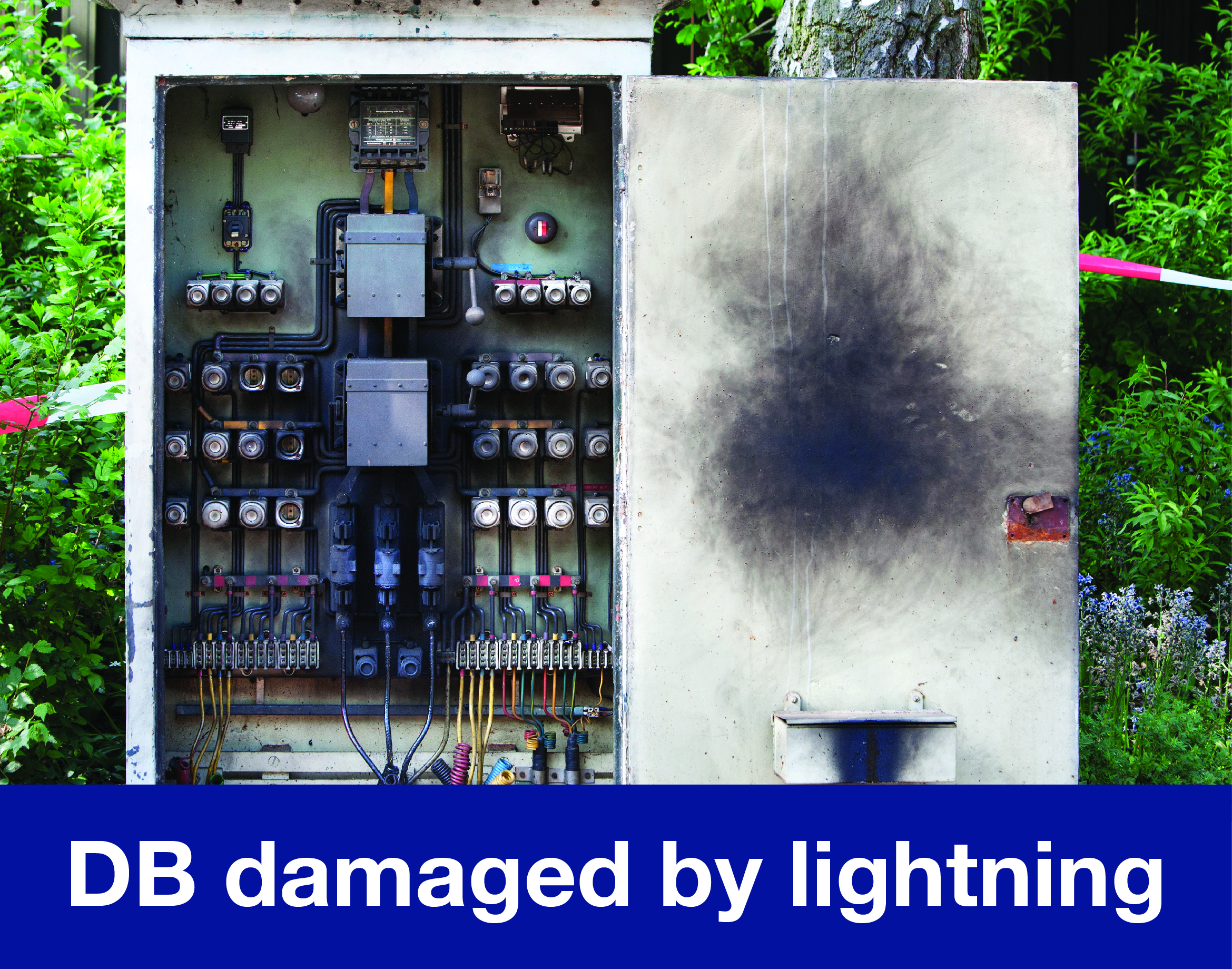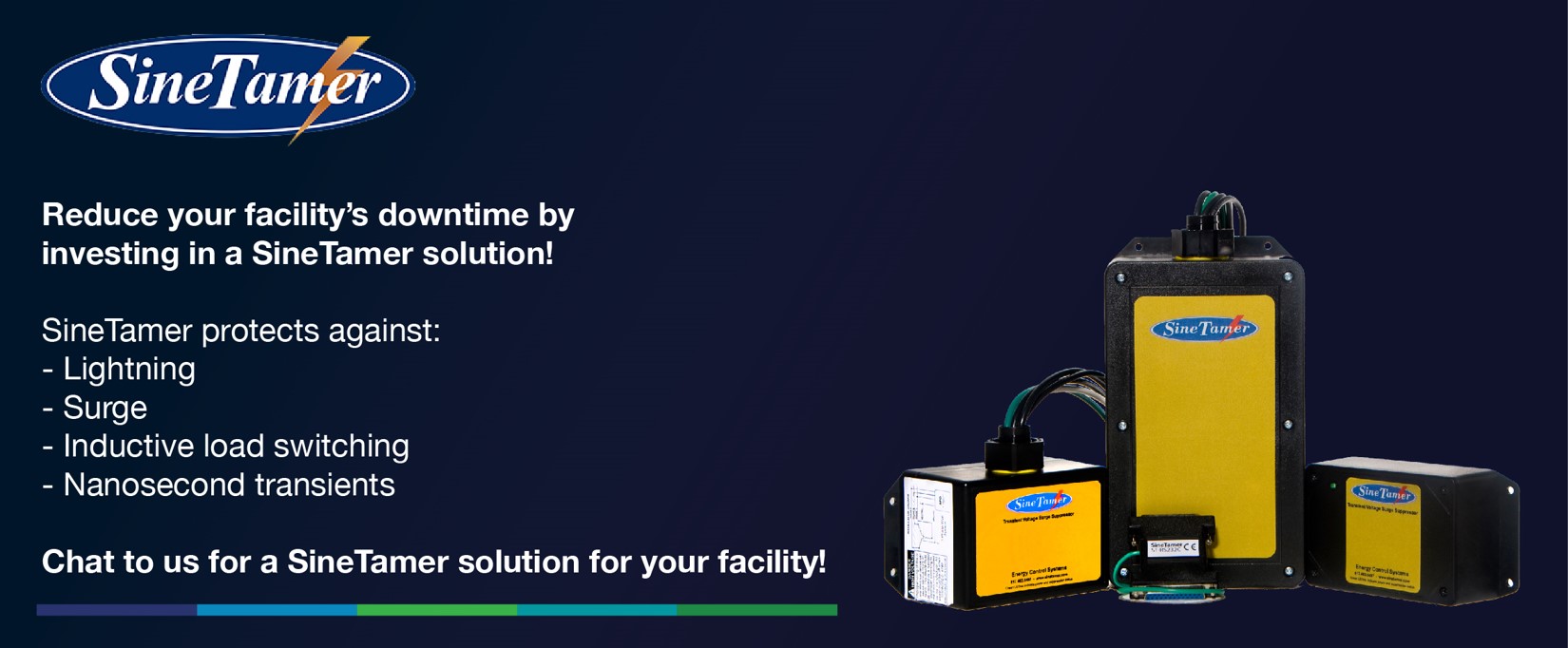The electrical event that produces the most significant downtime is the transient. A transient is also known as a spike or surge, although, generally these terms refer loosely to the same event. Transients are high energy (with magnitudes in the thousands of volts) and short duration (with rise times in the 1 to 10 microsecond range). Since they are sub-cycle events, they should not be confused with longer duration events such as swells or temporary over-voltages.
Click here to learn more about these and other power quality issues.
Transients disrupt, damage or destroy electrical and electronic equipment in an instant, and/or cause cumulative damage over a period of time, resulting in unexplained failures. In this article, we give you a basic understanding of transients, the damage they can cause and the importance of surge protection devices.
Transients defined…
According to the IEEE 100 A-Z guide, a transient is defined “as a change in the steady-state condition of voltage or current, or both”. According to the IEEE 1100-2005 “a transient is a sub-cycle disturbance in the arc waveform that is evidenced by a sharp, brief discontinuity of the waveform. May be of either polarity and may be additive to, or subtractive from, the nominal waveform.”
In both definitions it indicates a change in the fundamental frequency of the sine wave.
Where do transients originate from?
Sources of transients are categorized as being externally generated or internally generated. Again referring to IEEE C62.72-2007:
“Surges that occur in low-voltage AC power systems, and impinge on a PDS from outside a facility, originate primarily from two sources. These sources are lightning and switching:
a) Lightning surges
Lightning surges are the result of a direct flash to the power system, to the structure of interest and nearby structures, or to the soil. Distant lightning flashes can also induce voltage surges in the circuits of an installation.
The impact of catastrophic lightning events is dramatic. The energy released in a direct or even indirect lightning event is impressive to say the least, with problems ranging from vaporized electrical switch gear to charred remains of what was formerly a lightning arrestor or surge suppressor.
b) Switching surges
Switching surges are the result of intentional actions on the power system, such as load or capacitor switching. They can also be the result of unintentional events, such as power system faults and the subsequent corrective actions.”
Most surge activity originates from within the typical facility, as much as 80%, depending on the complexity of the operations. These are the surges/transients referred to above as switching surges. These transient events are created by the normal ON/OFF operations of electric loads, and the inductive load “kick” created by motor stop/start operations. Examples of internally generated sources of transients include:
- Static electricity
- Loose wiring
- Inductive load switching
- Variable frequency drives
Surge Protection Devices
Surge protection devices (SPD) have been utilized for more than three decades. Their prime purpose is to protect and prevent losses to electrical and electronic equipment by removing the excess and unusable energy contained in surge events. Electronic equipment has evolved and so also has the technology of surge protection devices.
Over the last 25 years, the evolution of the surge protective device has been impressive. The SPD has evolved from a single component gas discharge tube, spark gap, or other nonlinear resistive type device, to a multi-component hybrid network of a variety of components. The science of surge protection has produced a widely successful range of products that can address every manner of AC and DC power circuits, along with telecommunication, data and telemetry equipment.
Who needs Surge Protection?
Everyone who uses electricity, telephone lines, or computer data lines needs some type of transient voltage surge protection. Industry, in particular, cannot afford the excessive cost of downtime these days. For them, surge protection devices are no longer an option; they are a necessity.
Want to reduce downtime? Click here to chat to our experts!
Click here to learn about the Sinetamer range of surge protection devices!
Source: Evolution of SPDs by Jeff Edwards
CEO and Founder of Energy Control Systems, developers of Sinetamer




